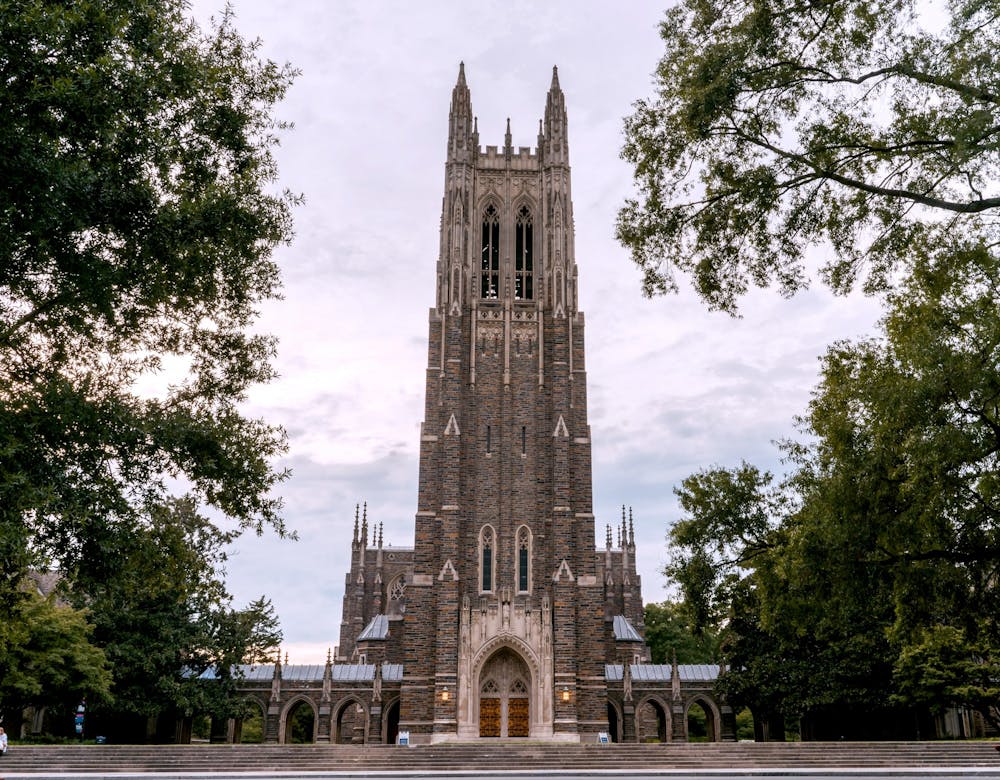Duke received a record number of Early Decision applications and expects a record-low acceptance rate this year.
Dean of Undergraduate Admissions Christoph Guttentag wrote in an email that Duke received 5,040 Early Decision applications to the Class of 2025, compared to 4,280 last year—a 17.76% increase.
There were 4,852 Early Decision applicants to the Class of 2023, 4,090 to the Class of 2022 and 3,516 to the Class of 2021.
The Chronicle reported last year that Duke received 4,300 Early Decision applications to the Class of 2024, but Guttentag noted that the numbers differ slightly depending on “when counts occur and how things are defined.”
In a letter to colleagues, Guttentag wrote that Duke expects an Early Decision acceptance rate of 16% to 17% this year. This translates to “between 800 and 850” admitted students—“somewhat fewer than normal because of the number of students taking a gap year this year,” Guttentag wrote.
For the Class of 2024, 21% of applicants—887 students—were admitted. For the Class of 2023, 18%, or 882 students, were admitted.
Guttentag added that the total size of the entering class, including students returning from a gap year, will remain the same as in previous years: between 1720 and 1730 students.
Guttentag told The Chronicle that this surge in the number of Early Decision applications has been “unprecedented and certainly unexpected.” He wrote that the conventional wisdom was that with all the challenges this year, more students would “wait to apply, with fewer feeling like they were in a position to make the Early Decision commitment.”
“It turns out we were wrong,” he wrote. “I haven’t spoken with counselors since our application deadline, but I expect that there is a cohort of students and families who have been thinking about college admissions for a while, and they felt as if they had enough information—and perhaps were concerned about how students taking gap year might affect admit rates—that they wanted to take advantage of the opportunity to apply Early Decision.”
Guttentag added that although he doesn’t know the numbers at other selective private universities, he senses that “they’re also seeing an increase.”
Duke became test-optional for the 2020-21 admissions cycle, to ensure that students who are unable to or choose not to submit SAT or ACT scores will not be disadvantaged in the admissions process. Guttentag verified that 60% of Early Decision applicants submitted SAT or ACT scores, while 40% opted not to.
He wrote that he disagrees with critics who assert that students who submit their SAT or ACT score still hold an advantage over students who do not, emphasizing that it is “oversimplification of the role of standardized tests” and that it “sets up a false dichotomy” between those with high test scores and those who do not submit them.
He wrote that there are both students with high scores and students who haven’t submitted scores admitted.
As of Dec. 9, the admissions office is still unsure when it will be releasing decisions, but it is expected to be before Dec. 21, Guttentag told The Chronicle.
“A later application deadline and the increase in applications is squeezing us, and we don’t want to rush the decision making process,” he wrote. “Right now my expectation is that we’ll release decisions before [Dec. 21], I’m just not sure yet exactly when.”
Get The Chronicle straight to your inbox
Signup for our weekly newsletter. Cancel at any time.

Mona Tong is a Trinity senior and director of diversity, equity and inclusion analytics for The Chronicle's 117th volume. She was previously news editor for Volume 116.

